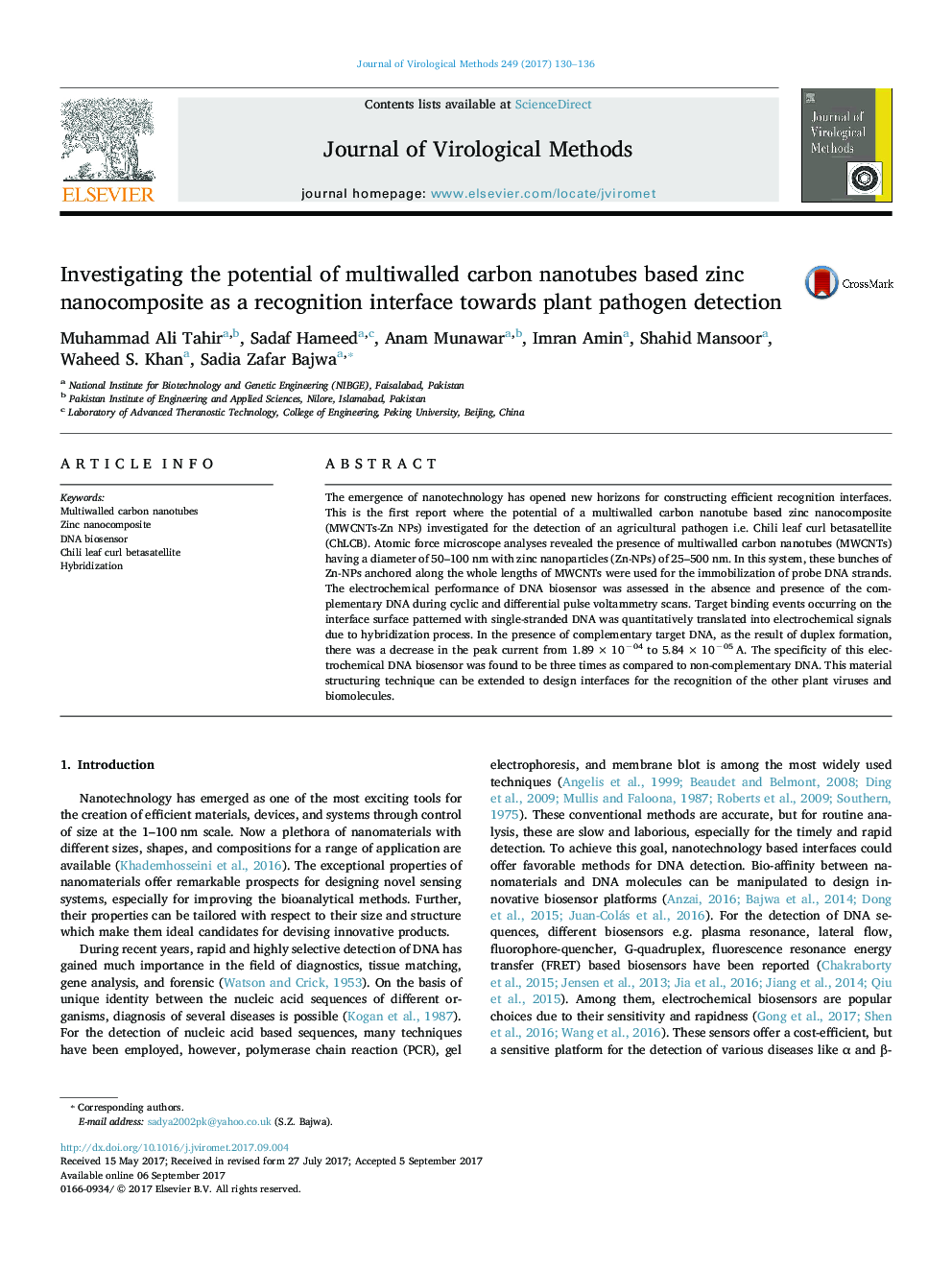| کد مقاله | کد نشریه | سال انتشار | مقاله انگلیسی | نسخه تمام متن |
|---|---|---|---|---|
| 5672990 | 1593428 | 2017 | 7 صفحه PDF | دانلود رایگان |
- A bio-recognition interface is constructed based on carbon nanotubes and zinc nnaocomposite.
- The morphology consists of bunches of Zn NPs (25-500Â nm) anchored along carbon nanotubes.
- The combined affinity and synergistic effects generate excellent three fold selectivity for the detection of viruses.
The emergence of nanotechnology has opened new horizons for constructing efficient recognition interfaces. This is the first report where the potential of a multiwalled carbon nanotube based zinc nanocomposite (MWCNTs-Zn NPs) investigated for the detection of an agricultural pathogen i.e. Chili leaf curl betasatellite (ChLCB). Atomic force microscope analyses revealed the presence of multiwalled carbon nanotubes (MWCNTs) having a diameter of 50-100Â nm with zinc nanoparticles (Zn-NPs) of 25-500Â nm. In this system, these bunches of Zn-NPs anchored along the whole lengths of MWCNTs were used for the immobilization of probe DNA strands. The electrochemical performance of DNA biosensor was assessed in the absence and presence of the complementary DNA during cyclic and differential pulse voltammetry scans. Target binding events occurring on the interface surface patterned with single-stranded DNA was quantitatively translated into electrochemical signals due to hybridization process. In the presence of complementary target DNA, as the result of duplex formation, there was a decrease in the peak current from 1.89Â ÃÂ 10â04 to 5.84Â ÃÂ 10â05Â A. The specificity of this electrochemical DNA biosensor was found to be three times as compared to non-complementary DNA. This material structuring technique can be extended to design interfaces for the recognition of the other plant viruses and biomolecules.
177
Journal: Journal of Virological Methods - Volume 249, November 2017, Pages 130-136
